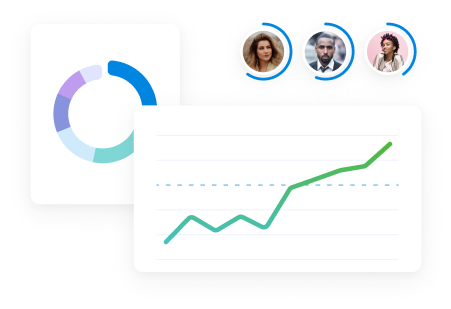Looking for Salesforce project management tools that go beyond the basics?
While Salesforce offers its own project management apps, you might find yourself needing more advanced features.
Maybe you need accounting integrations with Salesforce. Or maybe you need features to improve employee resource utilization.
Whatever your reasons, use our guide to the top five project management tools that integrate with Salesforce to find the best fit. So, you can streamline project management, boost productivity, and maintain profitable projects.
Our top of Salesforce project management tools
| Tool | Best for | G2 Rating | Starting price |
|---|---|---|---|
| Scoro | End-to-end work management for professional service firms | 4.5/5 | $26 per user per month |
| Miro | Visual project planning and brainstorming for creative teams | 4.7/5 | $8 per user per month |
| Monday | Customizable work management platform for teams of all sizes | 4.7/5 | $9 per user per month |
| Smartsheet | Spreadsheet-like project management for large teams | 4.4/5 | $9 per user per month |
| Trello | Kanban-style project management for individuals and small teams | 4.4/5 | $5 per user per month |
1. Scoro
Founded in: 2013
Average G2 rating: 4.5 (400 reviews)
Price: Starting from $26 per month annually
Salesforce integration: Native
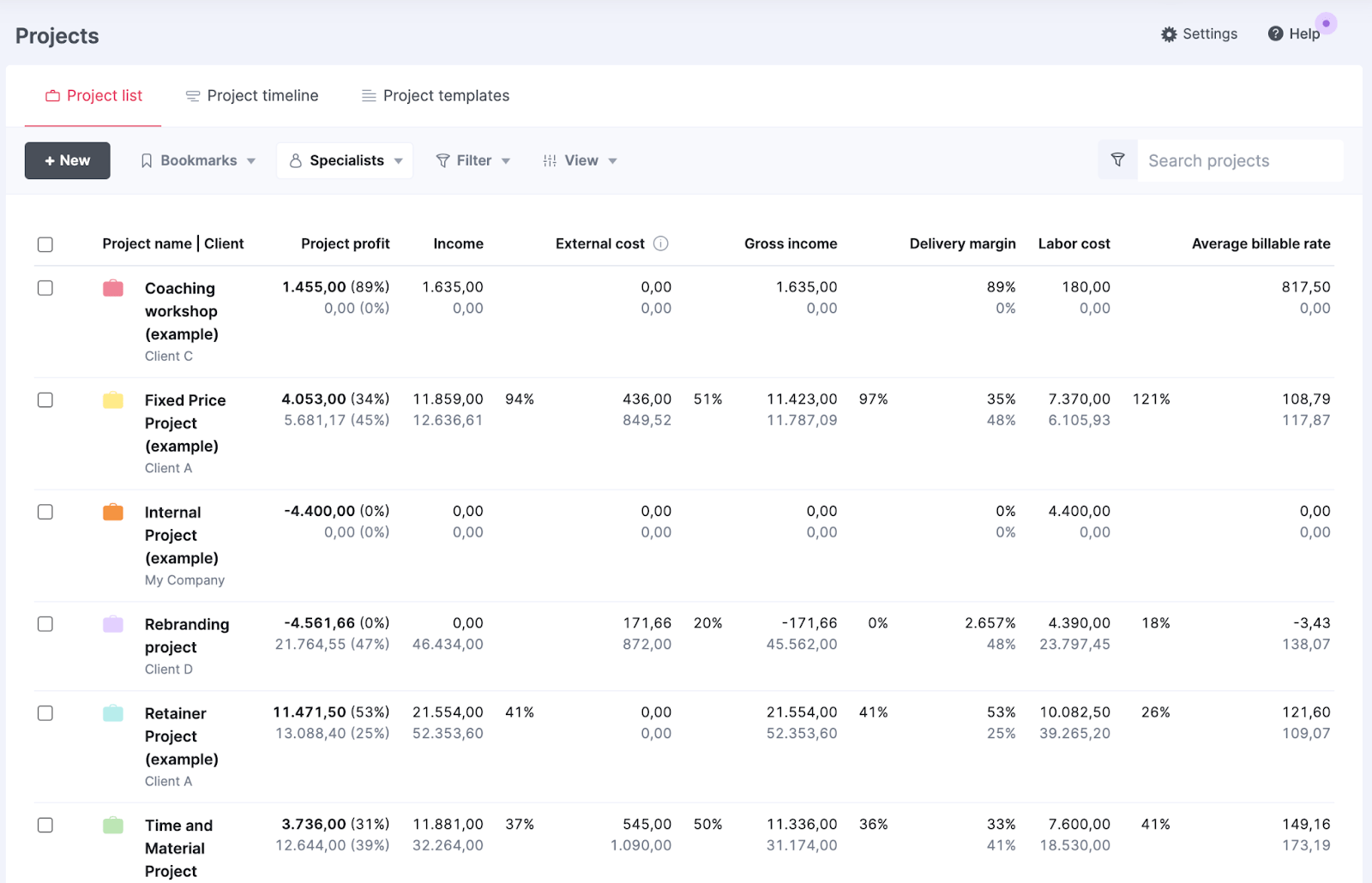
Overview
Scoro is a professional services automation (PSA) tool that brings together different parts of your business—like managing projects, tracking time, billing clients, and keeping up with customer info.
Consultancies, agencies, and other professional service businesses use Scoro to monitor project progress, boost profitability, and standardize operations.
For example, you can leverage its customizable dashboards to track agency metrics and KPIs in real-time.
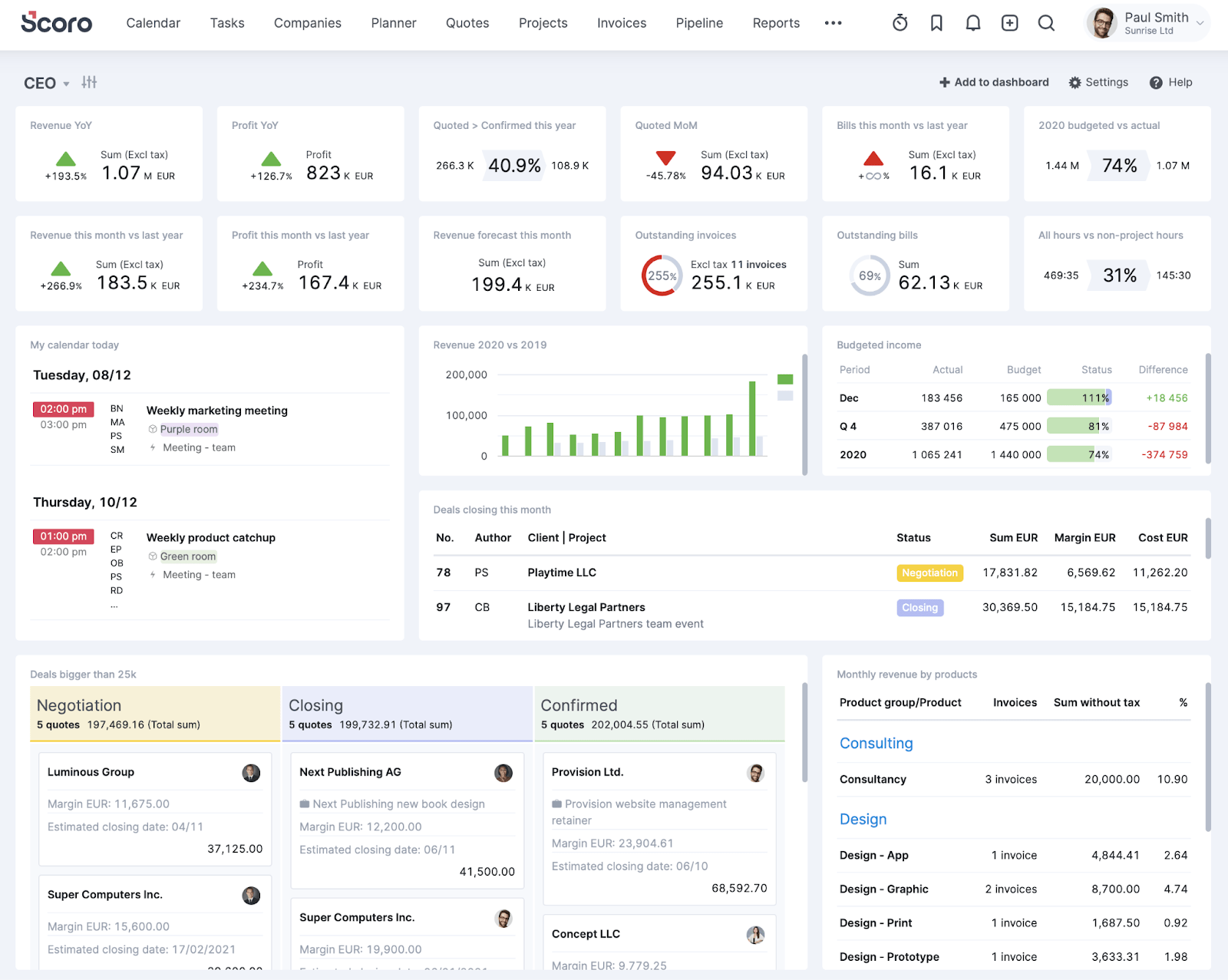
The widgets can display everything from project finance management metrics and your calendar to active projects and revenue projections. Pick and choose as many (or as few) as you need to make sure you’re on track to meet your org’s unique goals.
Scoro’s Salesforce integration overview
With a click of a button, Scoro’s native integration with Salesforce lets you automatically transfer Accounts, Contacts, and Opportunities into the platform.
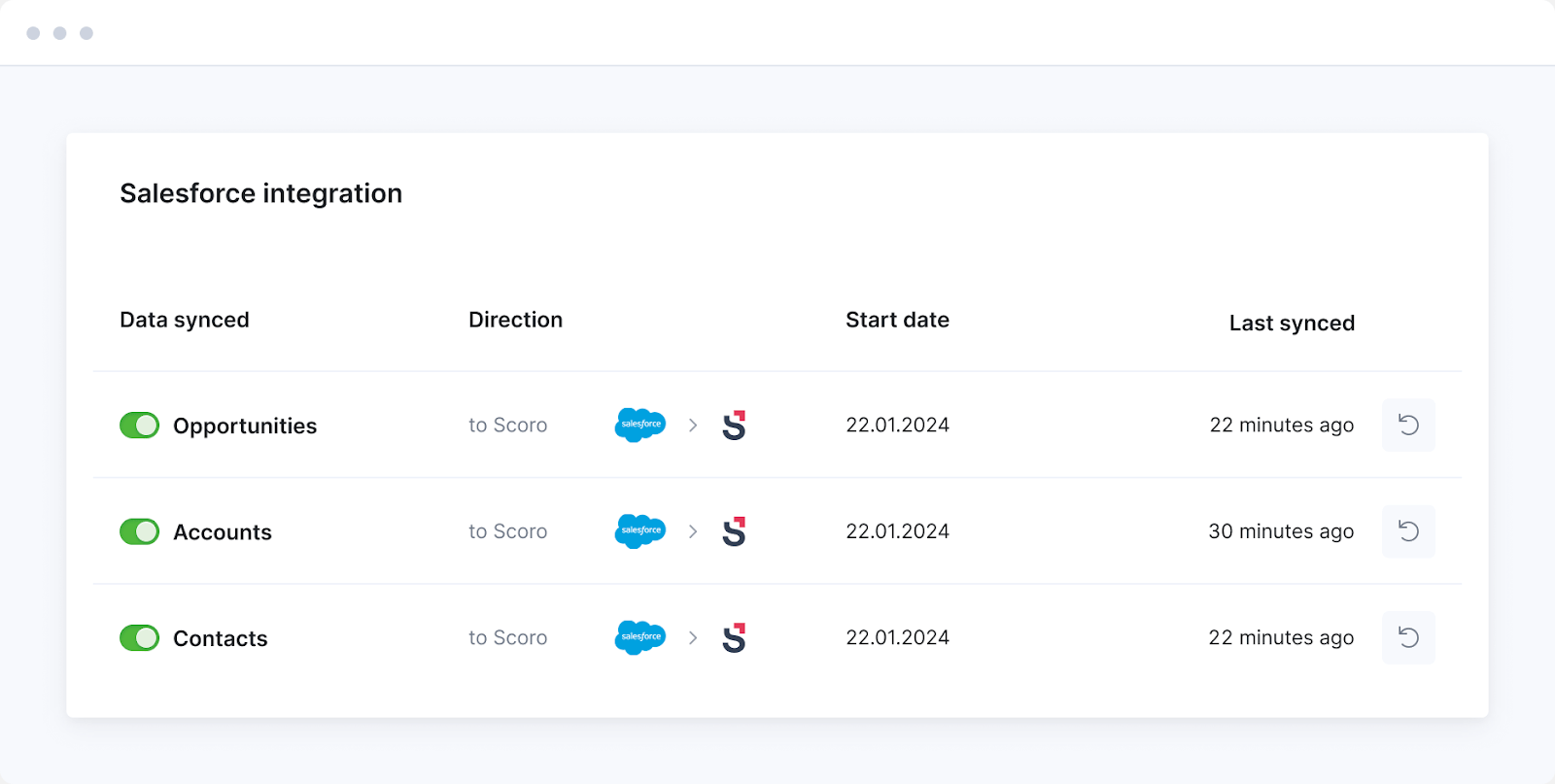
So, when a Salesforce lead becomes a confirmed “Opportunity,” all the relevant customer and project details populate a new Scoro quote. This speeds up your quoting and project planning processes. And gives you an accurate foundation to work from.
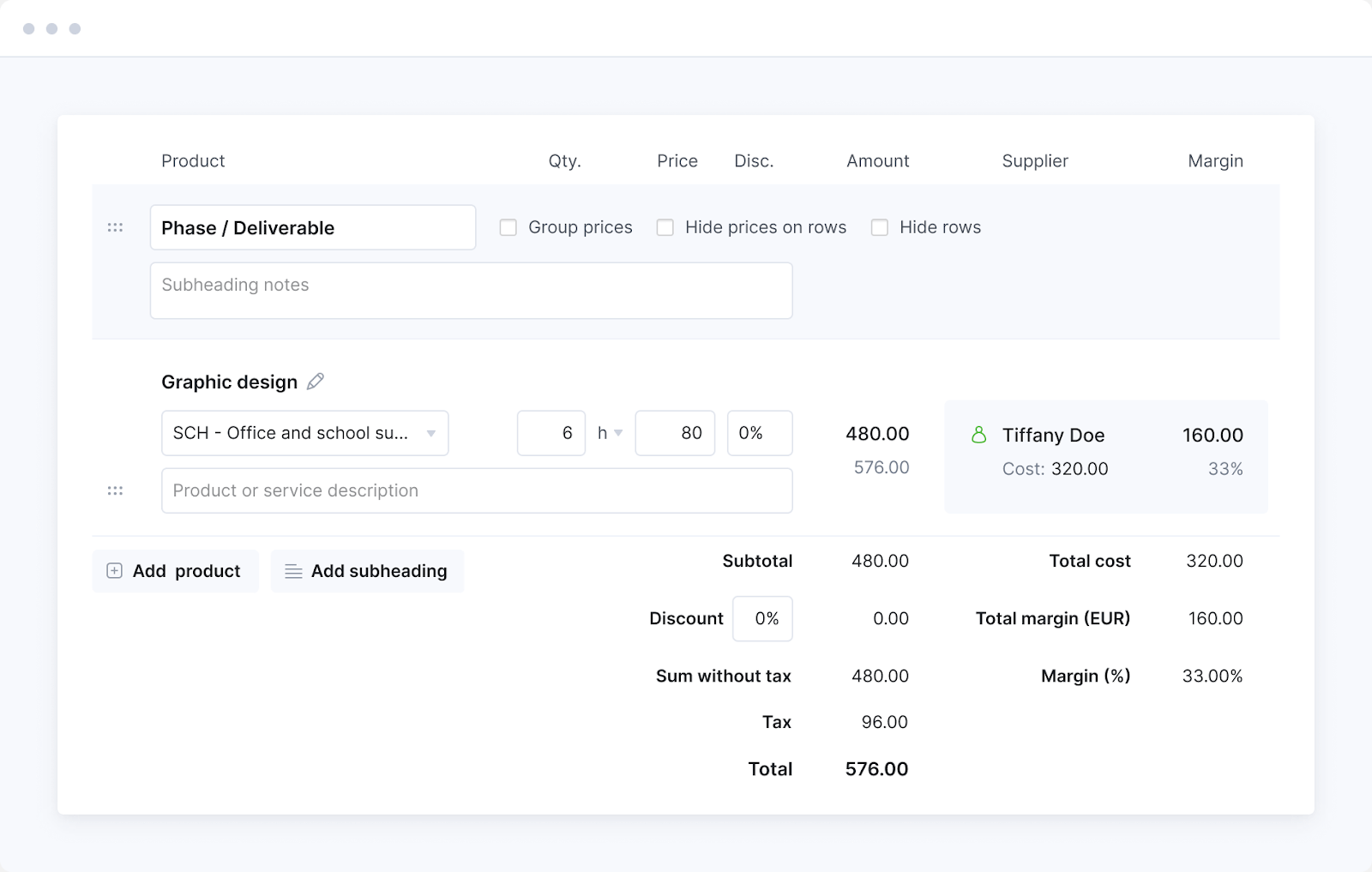
Once quotes are finalized, Scoro then transfers them back to Salesforce. So, both systems have the most current, accurate information on all deals. And your team, finance, and sales can all stay on the same page without back-and-forth emails.
Convert approved quotes into active projects, too. With just a few clicks, instantly create projects, tasks, and invoices—all pre-populated with the correct scope, hours, and rates from Salesforce.
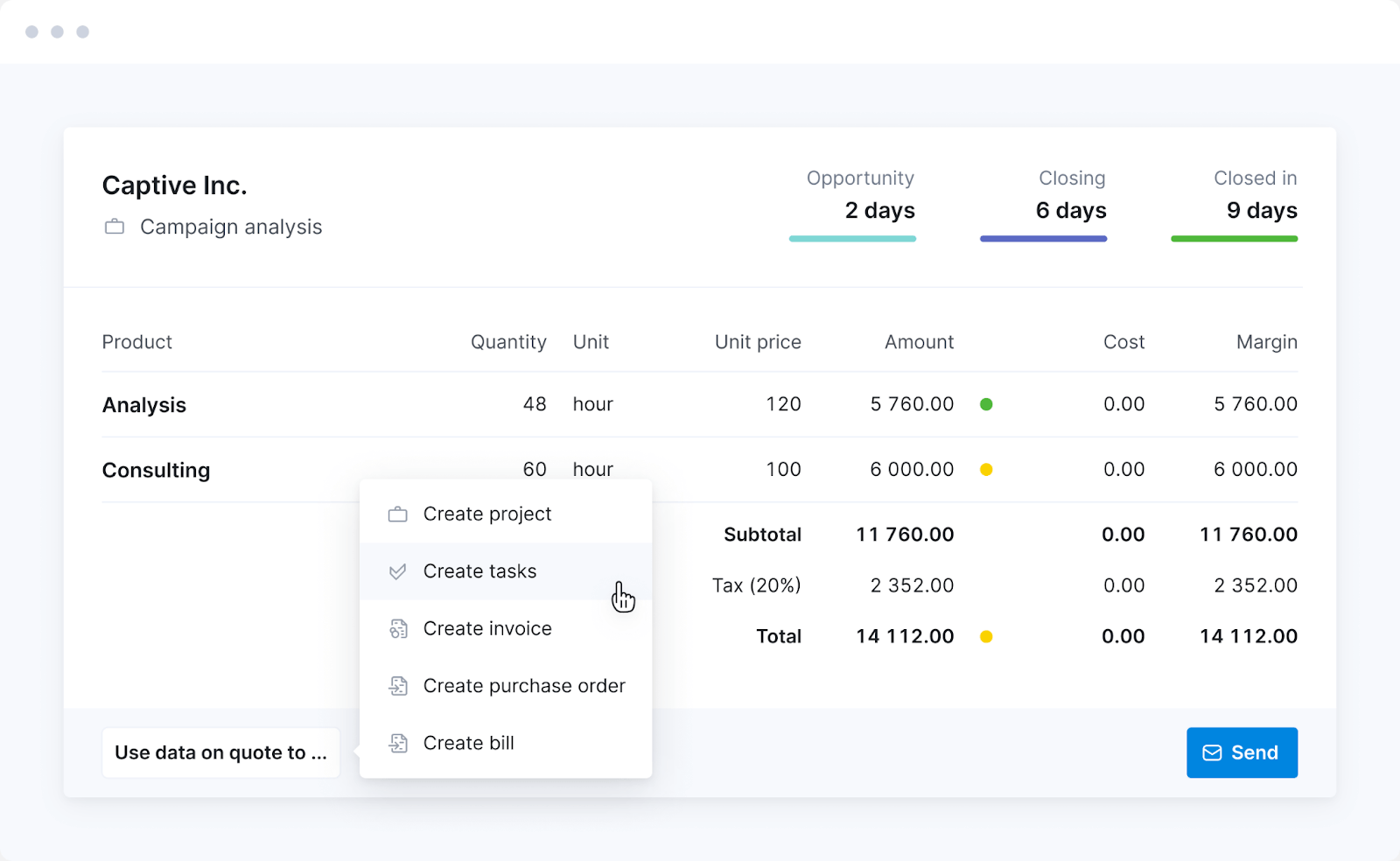
This automated handoff eliminates the need for lengthy emails between sales and delivery teams and prevents errors from manual data re-entry.
Beyond automatic data syncing, the integration lets you leverage the strengths of both platforms for a comprehensive analysis of your pipeline and projects. Use Salesforce to evaluate patterns in deal sizes and time to close. And use Scoro to dig deeper into profitability at the service, client, or project levels.
What others love about Scoro
“I like Scoro’s quotation capability because it makes it easy to create standard quoting for our clients. The template system makes us more efficient by enabling us to obtain pre-designed project plans rapidly and easily. Our product management tasks are run on robust servers to support this. Having all the text and estimated income in one place will help us track and forecast, which is a true asset to our workflow.”
—Noman, G2
“Overall, it enhances our opportunity management in the sales cycle as its API integration connects seamlessly to other tools. Further, by showing the sales pipeline visually, it is easy to track the opportunities and prioritize tasks effectively.”
—Roberto, G2
Pricing
Scoro offers four paid plans:
- Core: $19.90 per user per month
- Growth: $32.90 per user per month
- Performance: $49.90 per user per month
- Enterprise: Contact sales for pricing
Try Scoro for free with a two-week free trial.
2. Miro
Founded in: 2011
Average G2 rating: 4.7 (6,333 reviews)
Price: Starting from $8 per month annually
Salesforce integration: Native
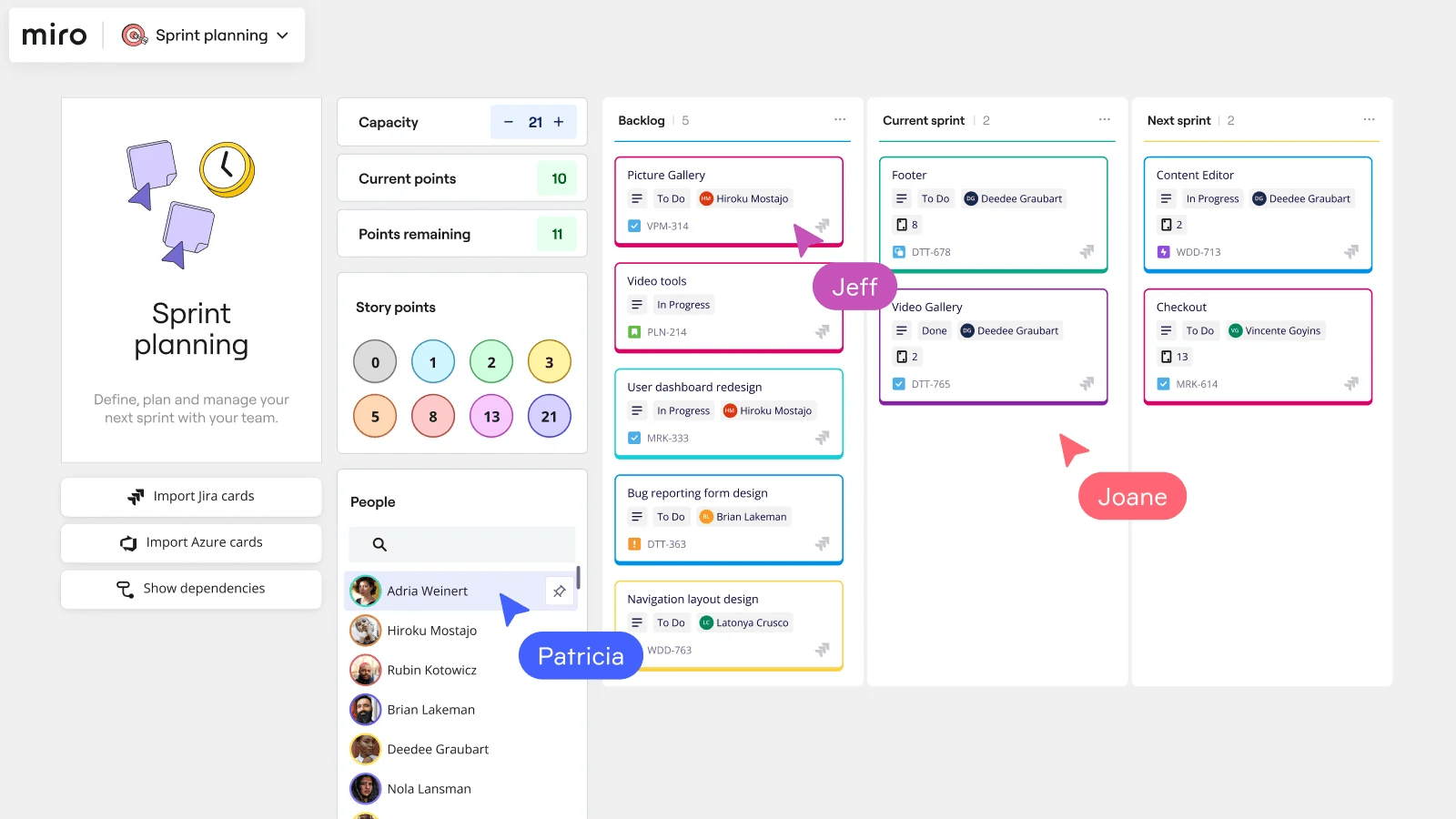
Overview
Think of Miro as a giant online whiteboard where your team can work together. Collaborate in one spot, sketching out ideas, planning projects, and creating visual aids like mind maps and flowcharts. It’s a great tool for remote and distributed teams.
Miro also stands out for its use of AI, offering an “Intelligent Canvas” that gives real-time suggestions on your boards. And lets you instantly transform objects into different ones like documents, questions, or user stories.
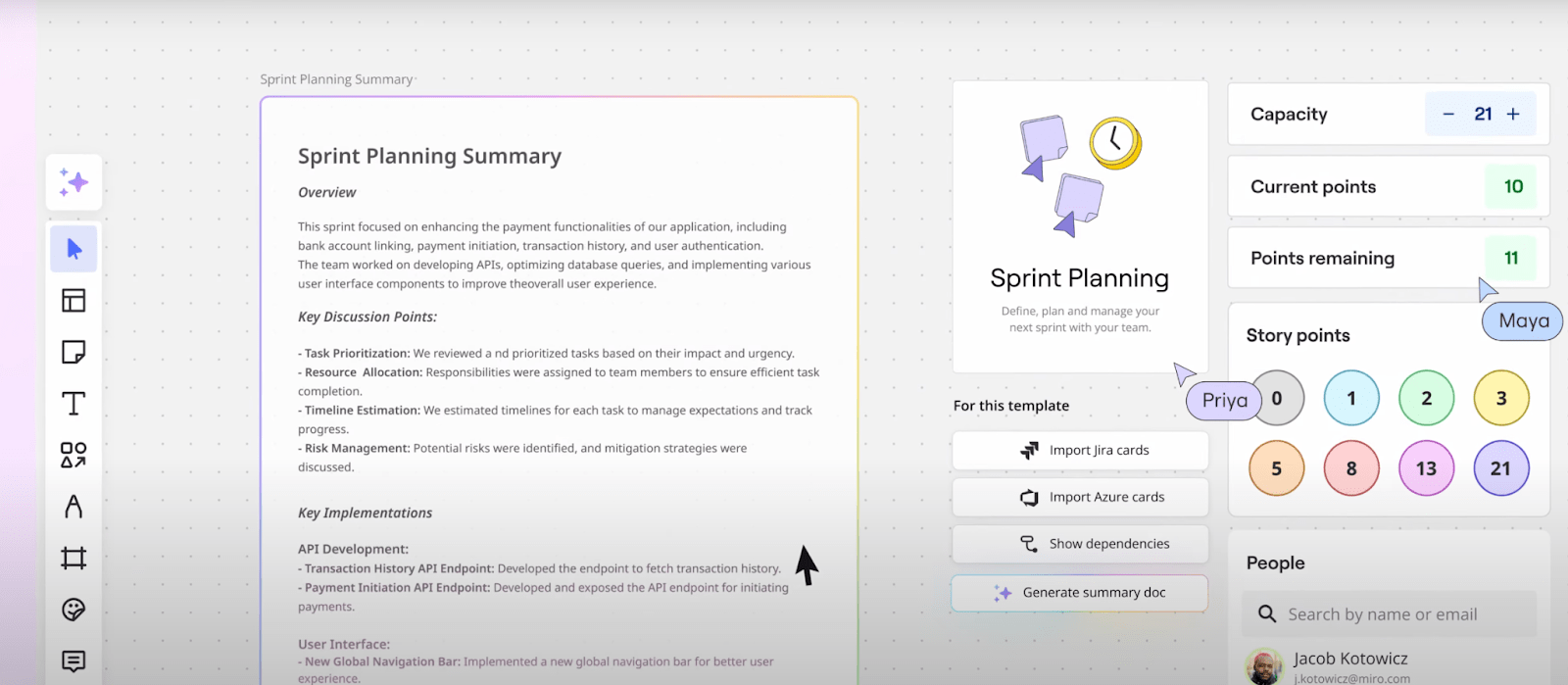
Miro’s Salesforce integration overview
Miro’s integration with Salesforce offers project managers and sales teams a visual, real-time sync to connect project planning with live sales data.
Pull any Salesforce record—opportunities, accounts, or leads—directly into your Miro boards as interactive cards. Each card displays essential details such as deal value, project stage, projected close date, and client information.
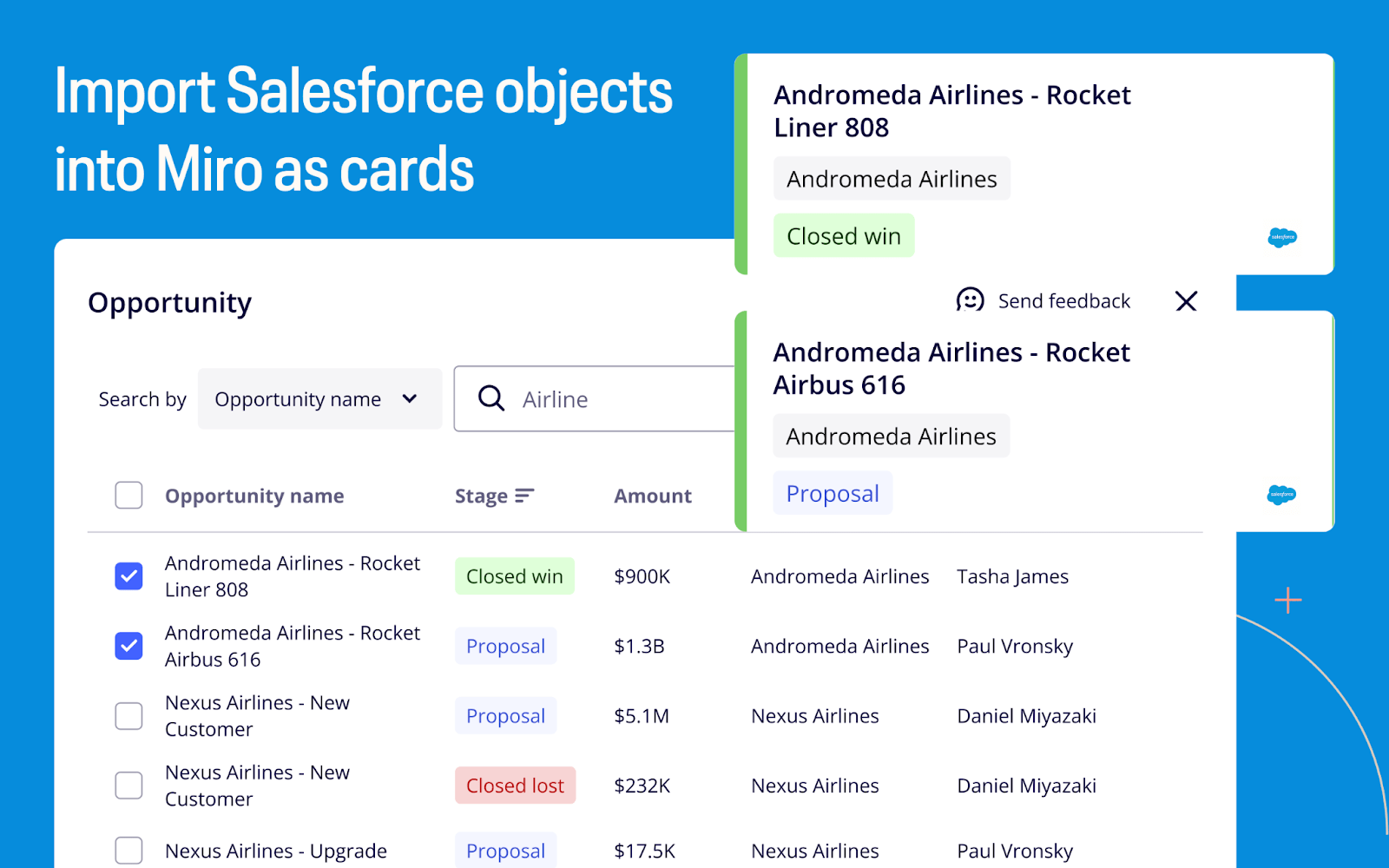
The Miro-Salesforce integration is ideal for visualizing customer accounts, allowing you to present key clients, their deals, and relationship statuses in a single, interactive view.
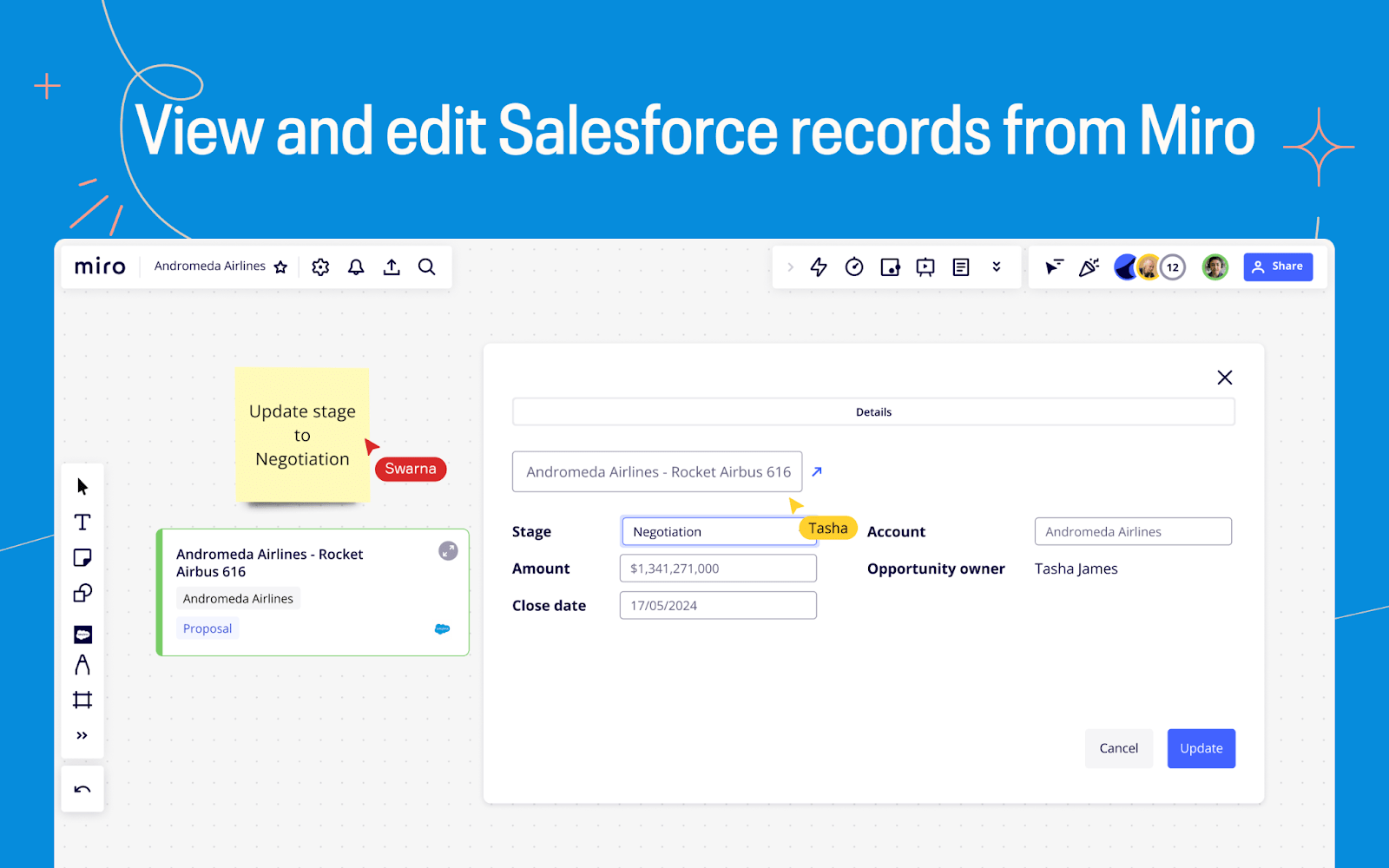
Project managers can visually organize these cards into project timelines, resource maps, or dependency charts, making complex data more intuitive and actionable.
For example, dragging multiple opportunity cards onto a project roadmap offers an immediate view of how active deals will impact team resources and project deadlines.
When managing projects in Miro, every change you make syncs back to Salesforce in real-time.
Moving a card to a new project phase updates the opportunity stage. Adjusting timelines on your board changes deal close dates in Salesforce.
Project managers can also create new Salesforce records directly from Miro—just add a new card to your board, and the integration automatically generates the matching Salesforce entry.
What others love about Miro
“It’s easy to communicate through the platform—we frequently tag each other for review and comment. Overall, it’s a really good balance of a professional tool and an accessible tool. I feel like I can use it with any client. Most of them start using it on their own after we introduce it.”
—Molly, G2
“Miro’s AI features have been a recent game-changer. Tools like auto-organizing ideas and highlighting important patterns save time and help us keep things running smoothly. Overall, Miro’s ease of use, flexibility, and new AI tools make it a must-have for any team of knowledge workers.”
—Laura, G2
Pricing
Miro offers four pricing plans:
- Free
- Starter: $8 per member/month
- Business: $16 per member/month
- Enterprise: Custom pricing
There’s a 14-day free trial available for the Business plan.
3. Monday.com
Founded in: 2012
Average G2 rating: 4.7 (12,272 reviews)
Price: Starting from $9 per month annually
Salesforce integration: Native
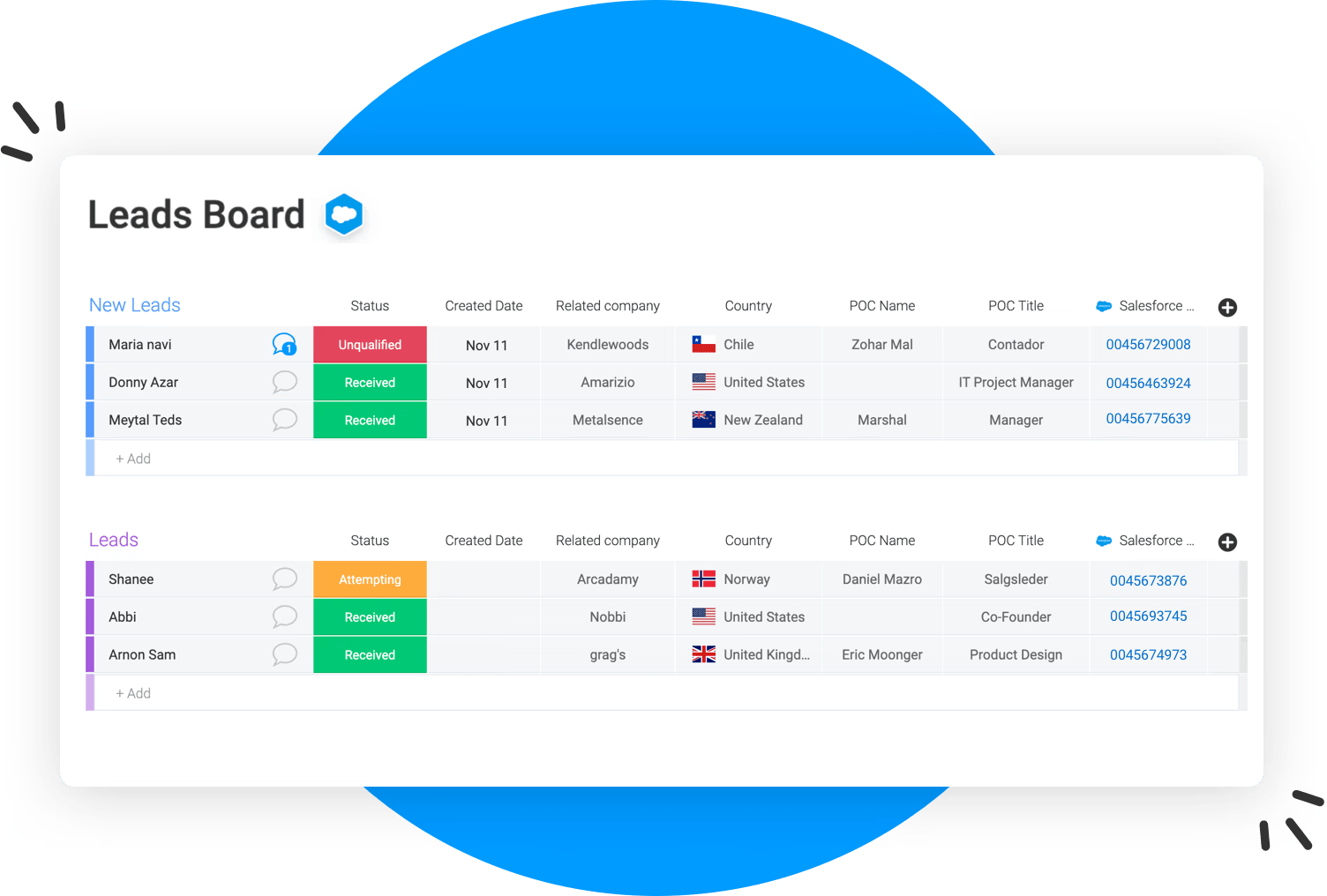
Overview
Monday is a work operating system (WOS) that helps teams better organize and manage their work. Customize workflows, automate tasks, and connect the platform with other tools you use (like Salesforce).
Monday gets rid of the need for multiple project management tools, offering customizable boards with various views like Kanban boards, calendars, and forms that let you stay on top of your project portfolio.
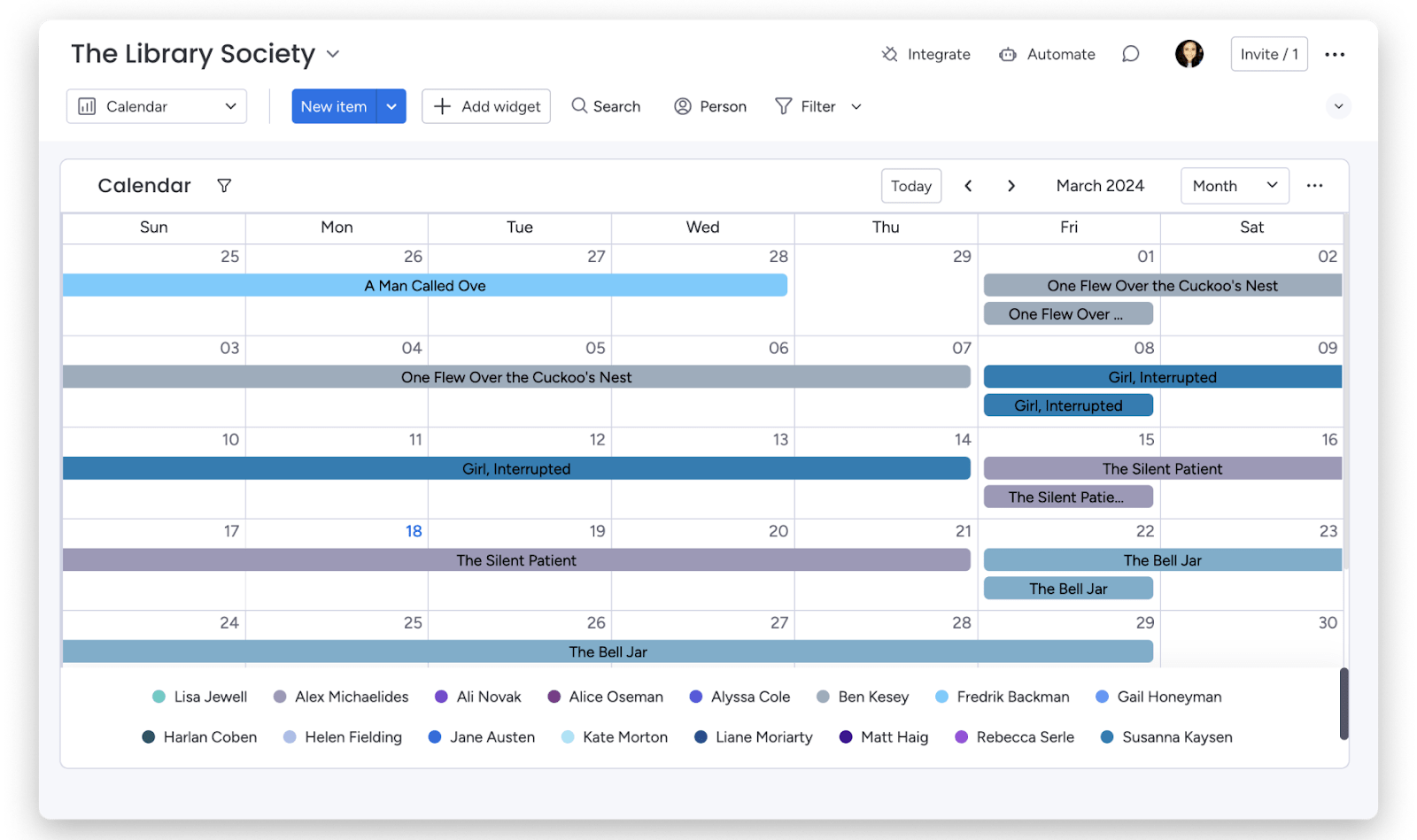
Monday.com’s Salesforce integration overview
Monday’s native, one-way integration with Salesforce only sends data from Salesforce to Monday. But it’s still valuable.
When Salesforce deals reach certain stages, you can set up the integration to create certain tasks and tag relevant team members in Monday.
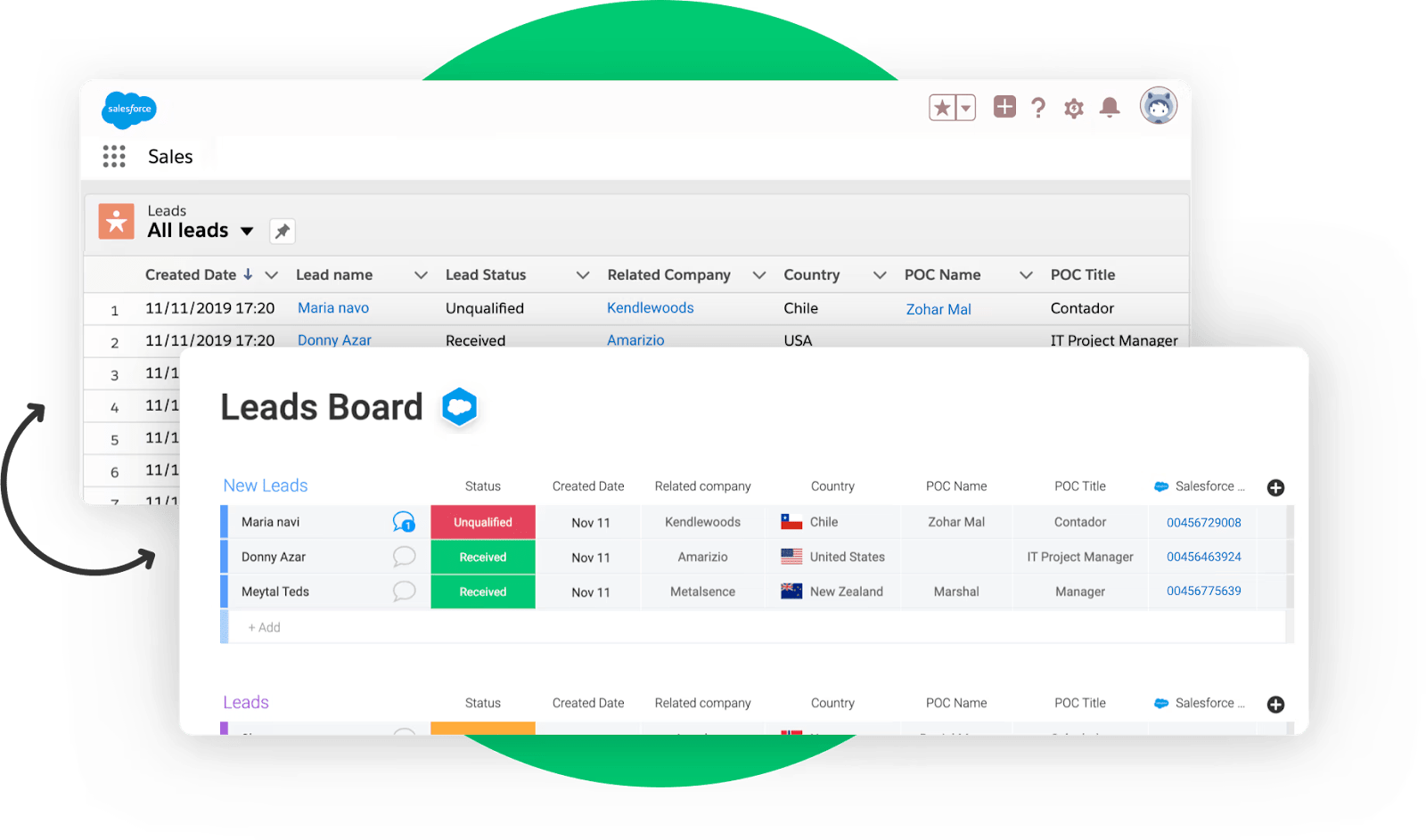
So, for instance, whenever a new account is marked as “Closed Won” in Salesforce, you can set up the integration to create a “New Client Onboarding” task in Monday. Then, you can immediately jump on connecting with the new client and hammering out specific project needs, resource requirements, and other key details.
What others love about Monday
“The platform is incredibly versatile, allowing us to create custom workflows that fit our needs perfectly.”
—Ayush, G2
“Being able to tag my colleagues in deals that are relevant to them is super helpful and cuts down on a lot of inter-office communication on other apps. I also find it super helpful when discussing my pipeline in our weekly all-hands meetings. Everything that I need to report on is right there.”
—Tim, G2
Pricing
Monday has five plans:
- Free
- Basic: $9 per user per month
- Standard: $12 per user per month
- Pro: $19 per user per month
- Enterprise: Customized pricing
There are 14-day free trials available for all plans except Enterprise.
4. Smartsheet
Founded in: 2005
Average G2 rating: G2: 4.4 (16,976 reviews)
Price: Starting from $9 per month annually
Salesforce integration: Native
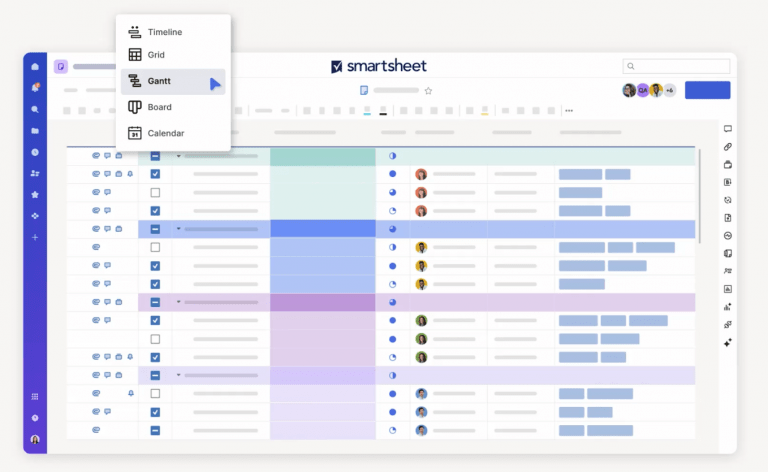
Overview
Smartsheet combines a spreadsheet layout with project management features like file sharing, automation, and Gantt charts. It’s best for enterprise companies that manage lots of projects, programs, and processes that scale.
Something unique about Smartsheet is its WorkApps feature. This lets you add customizable, no-code solutions that support different business needs.
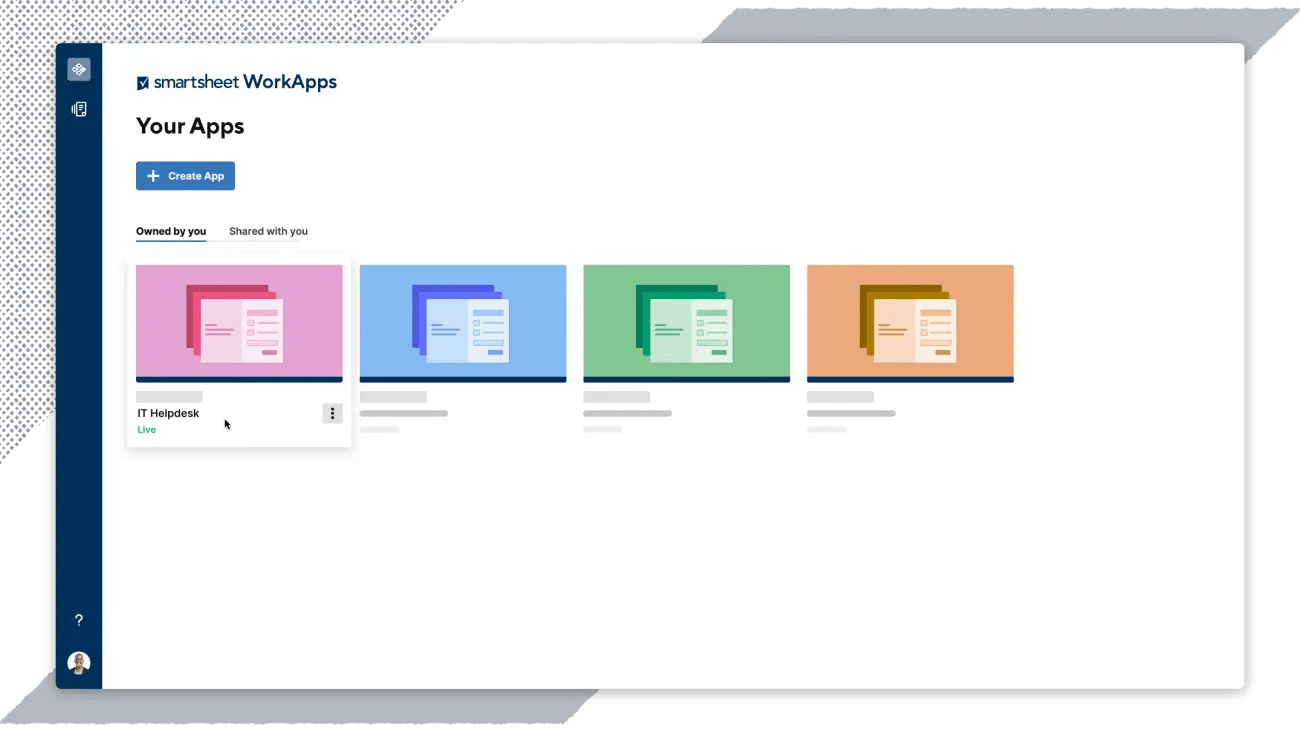
For example, a project manager can create a WorkApp to calculate project timelines based on task dependencies. Or a sales team can make a WorkApp to track pipeline progress and generate reports.
This removes the time and expertise needed for coding, letting teams quickly adapt Smartsheet to fit their processes.
Smartsheet’s Salesforce integration overview
Smartsheet’s Salesforce Connector automatically syncs info in both tools, linking your sales info with your projects to help you stay organized and on top of your work queue before things even kick off. And ensuring that project and customer info stayed updated throughout project lifecycles.
When a sale is made in Salesforce, the connector automatically creates a new project sheet with predefined tasks, timelines, and resource allocations in Smartsheet.
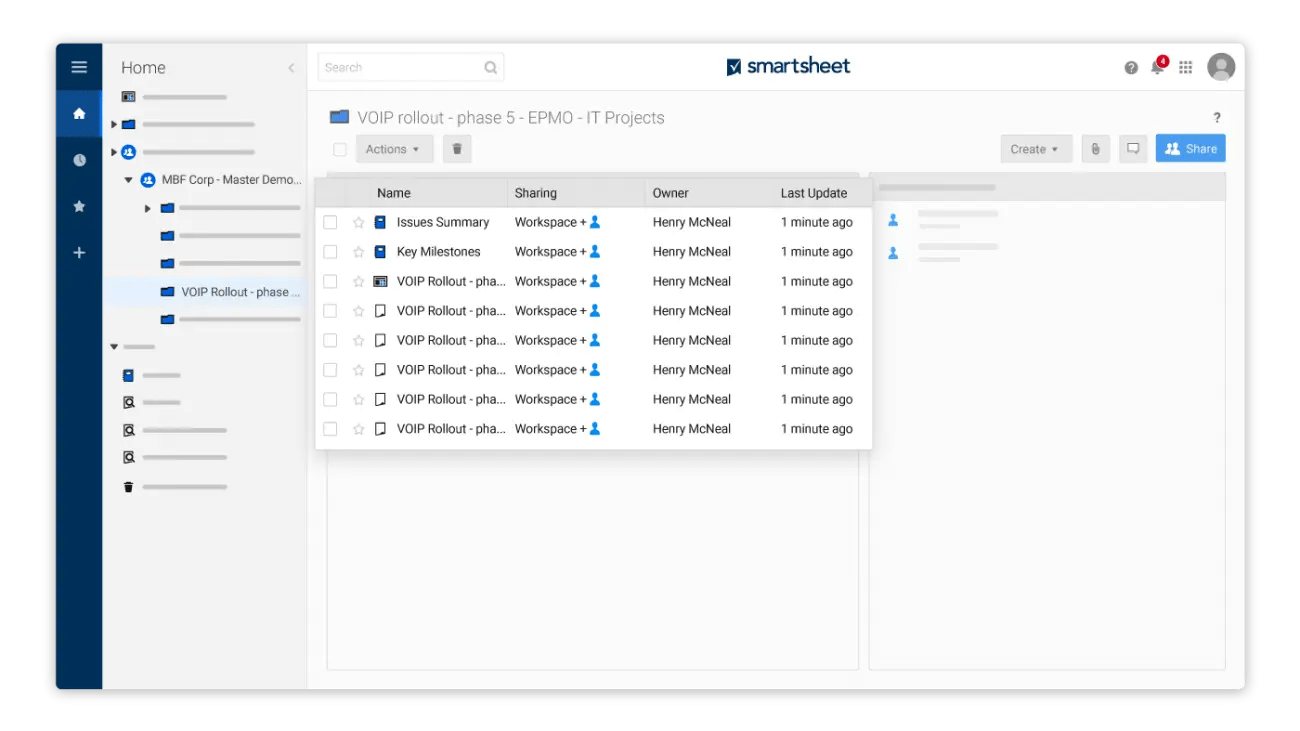
This automation speeds up project kickoffs and ensures your project plans are based on the latest sales information.
Project updates made in Smartsheet automatically appear in Salesforce’s opportunity records.
For instance, when a project manager updates task status or project milestones in Smartsheet, sales teams can see this progress directly in their familiar Salesforce interface, complete with key details like project owner, timeline, and current stage—all without leaving their platform.
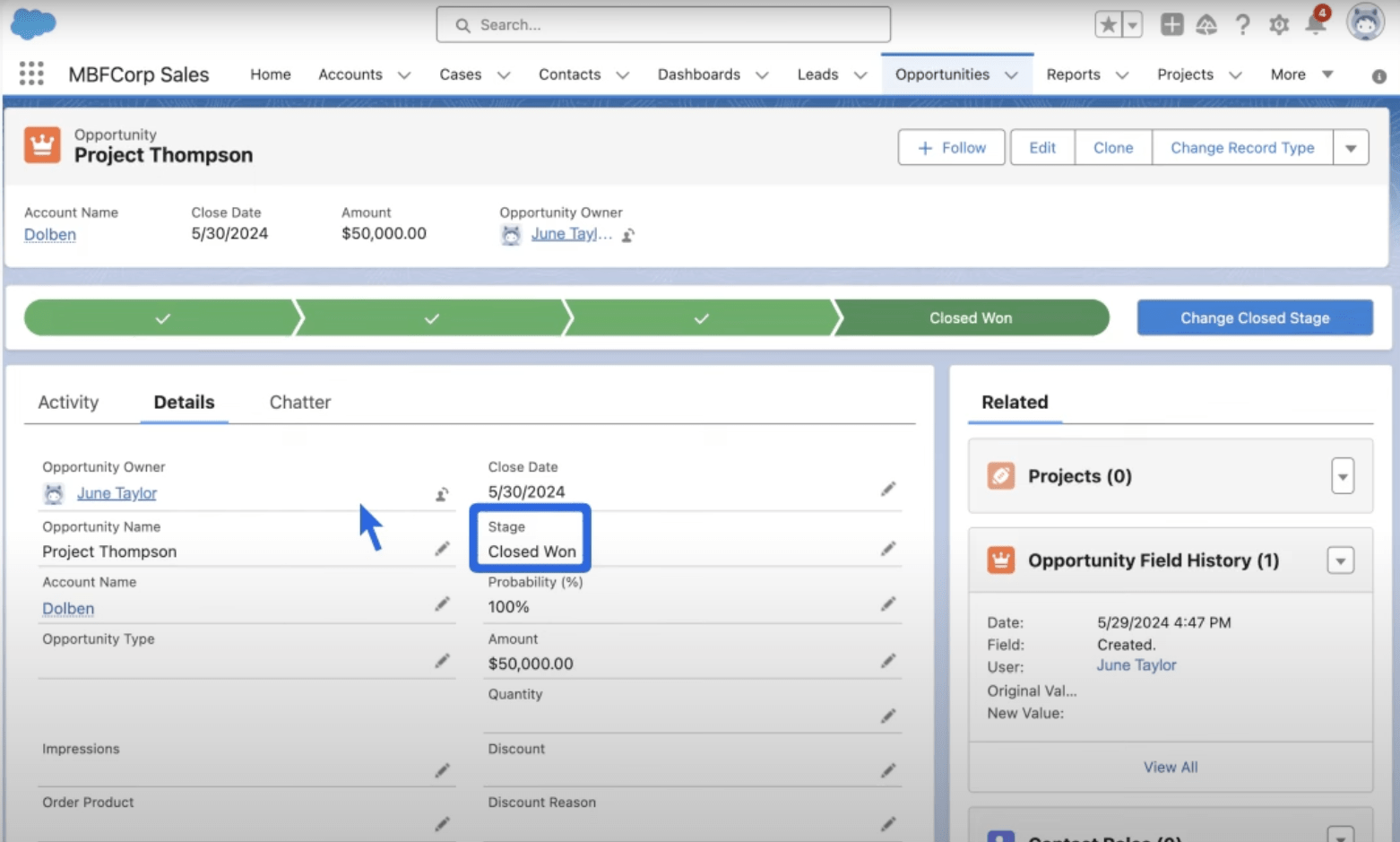
With imported Salesforce data in Smartsheet, you can also create live reports and KPI dashboards that show you how both your sales and projects are doing.
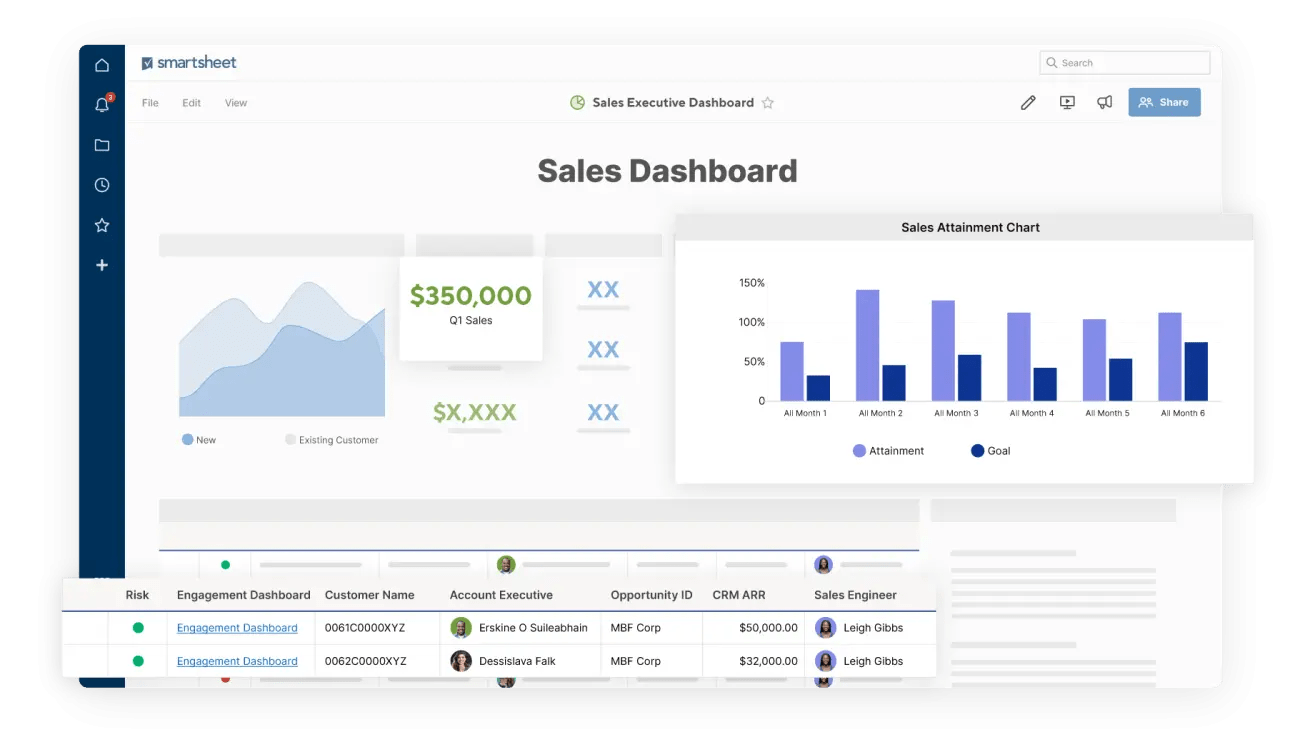
For example, you can build a dashboard combining project execution metrics such as task completion rates (tracked in Smartsheet) with client data like account value (pulled from Salesforce).
Using bar charts and line graphs, visualize how project timelines and resource allocation correlate with contract values and client satisfaction scores.
This pinpoints which types of projects—such as short-term vs. long-term initiatives—deliver the highest ROI.
What others love about Smartsheet
“I love the automation and collaboration capabilities. We use it for a scheduling approval system, as our team schedules are very complex and come from many different funding sources. The use of Dynamic View and Data Shuttle has enabled me to easily update the master sheet with a data download from our organization’s database. And then confidentially display the results of the reports that are pertinent to their respective managers.”
—Stacey, G2
“One of my favorite features is the ability to copy “templates” or past project groups to set up quickly and easily for the next project with different members. This has reduced our team’s effort in the past of maintenance sheets via sharepoint and teams a breeze.”
—Emily, G2
Pricing
Smartsheet has three plans with custom pricing:
- Pro: $12 per user per month
- Business: $24 per user per month
- Enterprise: Customized pricing
There’s a 30-day free trial available.
5. Trello
Founded in: 2011
Average G2 rating: 4.4 (13,603 reviews)
Price: Starting from $5 per month annually
Salesforce integration: Native
Overview
Featuring boards, lists, and cards, Trello’s Kanban-style design offers a user-friendly way to track project progress.
Unlike other tools with multiple view options, Trello’s single-view focus eliminates potential confusion for team members. And lets everyone stay clear on core tasks and priorities.
Trello’s Salesforce integration overview
Trello’s Salesforce Power-Up (an integration in Trello) offers a one-way, real-time sync from Salesforce to Trello. But to use it, you have to be subscribed to the Salesforce Performance, Enterprise, Unlimited, or Developer tiers. Or the Professional Edition with the optional API access enabled.
The integration converts your Salesforce pipeline into a visual Kanban board for easier tracking and management.
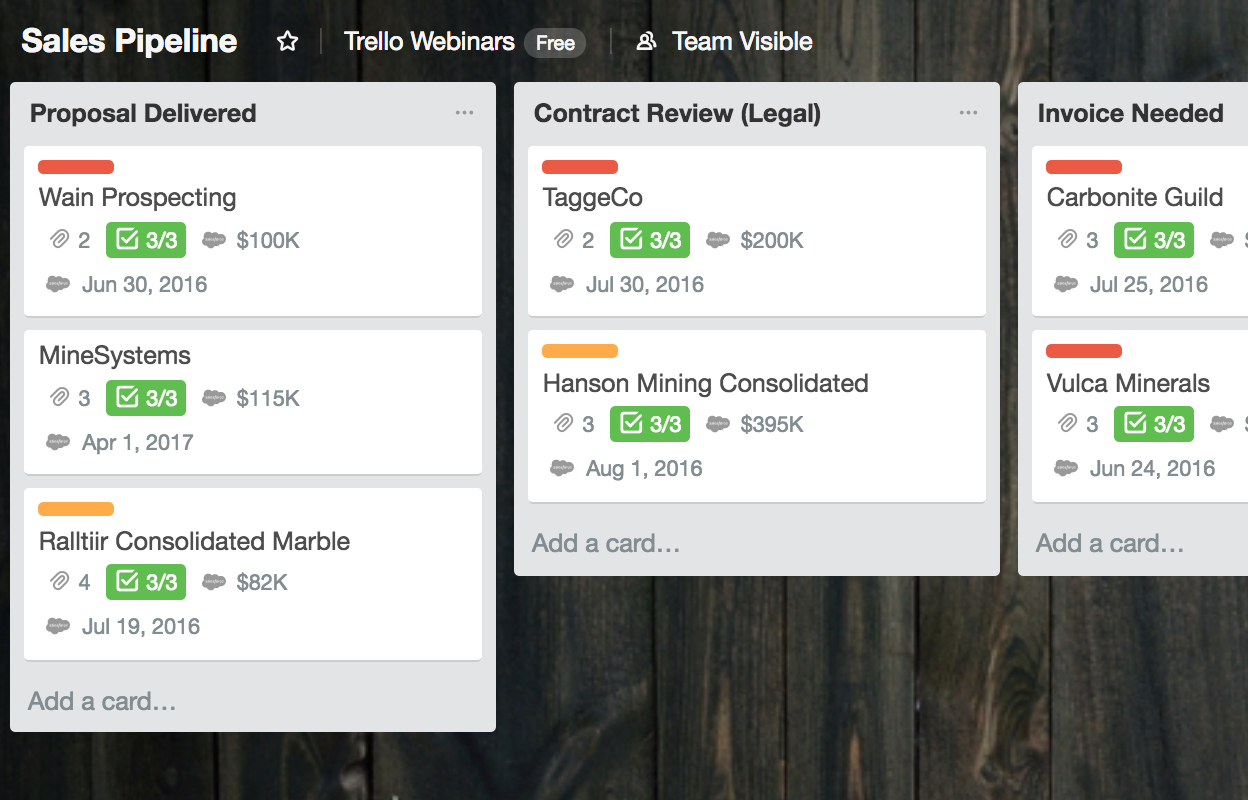
The Power-Up for Trello bridges the gap between sales data and project execution. This means smoother project kickoffs and better visibility into incoming work.
For example, when a deal closes in Salesforce, PMs can instantly create a Trello board that mirrors their project workflow (e.g., Planning, In Progress, Review, Complete). The Power-Up automatically pulls in key project details like client information, project scope, and timelines as card badges—no manual data entry needed.
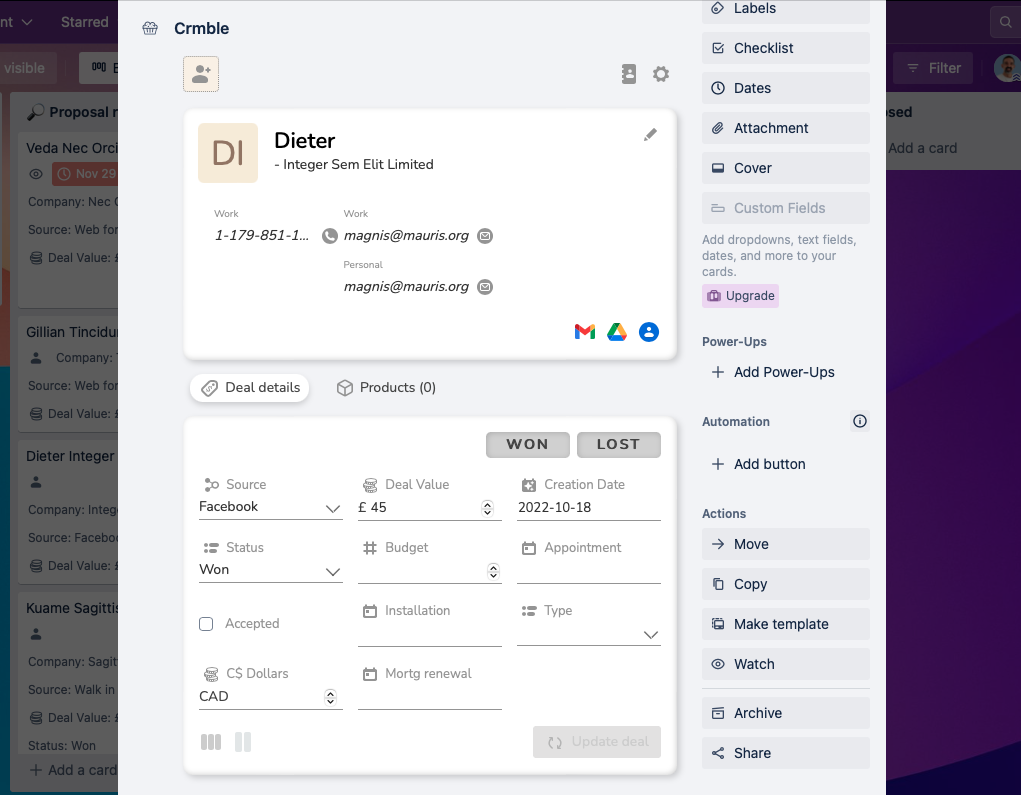
To attach a Salesforce Objects to a Trello card, click the “Salesforce” button on the card:
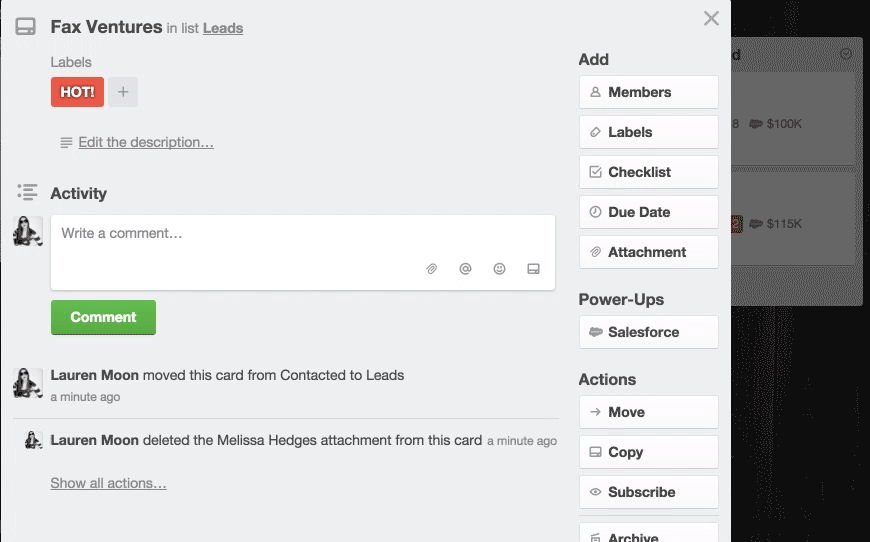
The integration helps project managers get new projects up and running faster with automatic data sync from closed deals and stay informed about client details and project requirements without leaving Trello.
What others love about Trello
“I love the Kanban view—it’s visually intuitive and perfect for organizing my thoughts and tasks. The free version offers a lot of workspace and ready-made templates, making it really easy to get started and stay organized. Trello is always open in my tabs and acts as my brain dump, which I find incredibly useful. I always recommend it to others, been using this for five years.”
—Roselle, G2
“It enables us to customize workflow, cards, to-do lists, and boards so effortlessly that complex project management seems really easy and brings out excellent framework and efficient results.”
—Aditi, G2
Pricing
Trello has four plans:
- Free
- Standard: $5 per user per month
- Premium: $10 per user per month
- Enterprise: $17.50 per user per month (for 50 users)
There are free trials available for the Standard and Premium plans.
Go beyond Salesforce integrations with Scoro
All the tools on this list offer valuable Salesforce integrations for project management. But Scoro’s end-to-end solution offers over 40 connections with popular tools, letting you create a single source of truth for all aspects of your business. And giving you a long-term return on your investment.
But don’t just take our word for it. Matt Stevenson Dodd, Trust Impact Managing Director, found that the “absolute beauty” of Scoro was its ability to centralize the agency’s operations and give real-time visibility into all business activities.
Check out his Scoro story. And see its impact for yourself with our 14-day free trial.




